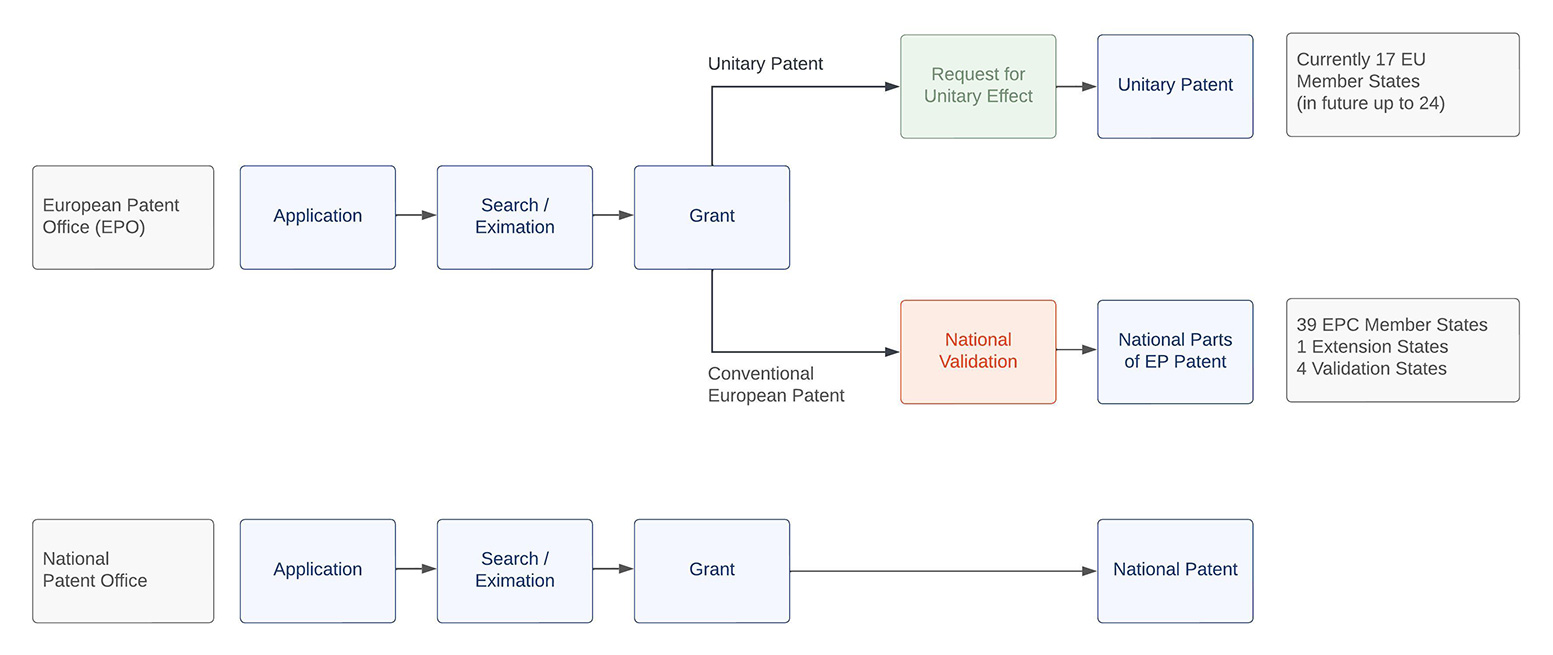European patents with unitary effect are examined by the European Patent Office - just like conventional European patents. The application and grant procedure is the same. However, patent owners newly have the possibility to file a so-called request for unitary effect after grant.
The unitary effect has to be requested at the European Patent Office within one month after grant. This option is available for any European patent granted after the UPCA has entered into force. A prerequisite for this is that identical patent claims exist for all EU Member States participating in the UPCA.
Parallel to the European patent with unitary effect, there is still the possibility to validate conventional European patents. This is of course also be possible for EU Member States which have not or not yet ratified the UPCA (e.g. Spain or Poland), as well as for states of the European Patent Convention which do not belong to the EU (e.g. Switzerland, Liechtenstein, the United Kingdom or Norway). In addition, national patents will continue to exist.
One advantage of the new European unitary patent is that it can be obtained with a central application at the European Patent Office in all 17 EU Member States having ratified the UPCA (June 2023). Parallel validation procedures do no longer apply in these states. Furthermore, after a transitional period of six years (which can be extended to a maximum of 12 years), translations will no longer be necessary. Moreover, for a European patent with unitary effect, only one annual fee has to be paid directly to the European Patent Office, which is also responsible for maintaining the register, for example in the event of a change of ownership. The complexity of validation and maintenance is thus significantly simplified.
Another advantage of the new unitary patent are its costs. It is expected that the unitary patent is less costly than a conventional European patent, if it is validated in three to four or more participating EU Member States. With validation in a larger number of states (in future up to 24), the cost savings over the entire term of the patent can be significant.
One disadvantage of the new system is that important European production sites or sales markets do not participate. Examples of this include Switzerland, the United Kingdom, Spain and Poland. Furthermore, rights from a European unitary patent have to be enforced or defended before the new Unified Patent Court, for which there is as yet (June 2023) no practical experience. Especially with regard to the possibility of an invalidity action, which in case of success may lead to a central revocation of the patent in all participating EU Member States, there is thus some uncertainty for owners of European unitary patents.
Links:
www.epo.org/applying/european/unitary/unitary-patent.html
